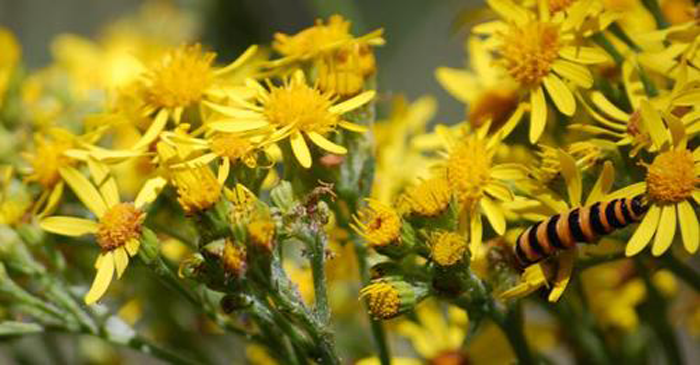The Clackamas Soil and Water Conservation District has identified tansy ragwort (Senecea jacobaea) as its Invasive Weed of the Month for July.
Tansy ragwort (Senecio jacobaea) is an invasive weed with a long and deadly history in the Pacific Northwest. In Oregon, it is designated as a Class B invasive weed. It is believed to have been introduced here in the early 1900’s through ballast water from a ship. This plant is native to Europe and Asia, but is now well established in Western Oregon. This bright yellow weed is a familiar sight in our rural communities. It likes a cool, wet climate, well drained soils, and full to partial sun. Patches of tansy are found in pastures, fields, grasslands, horse trails, and range land. It also grows along roadsides and in vacant lots, waste places, riparian areas, forested areas, and clearcuts.
Why should you care? In the words of the article, “Tansy ragwort is a killer.” It is poisonous to humans as well as livestock, causing serious liver damage due to a pyrrolizidine alkaloid that it contains. Animals can die after consuming 3–8% of their body weight.
Unmanaged pastures and disturbed areas are of greatest concern, as tansy ragwort can displace native vegetation and forage. Animals will avoid eating it, but in heavily infested pastures, they may have no choice. Contaminated hay is particularly troublesome, as feeding animals can’t avoid consumption.
Humans can be harmed too, if they come into skin contact with the plant, if they eat meat from livestock that consumed tansy ragwort, or if they eat honey made with its nectar.
Read the full article to learn more about the harm and the control methods for tansy ragwort.

